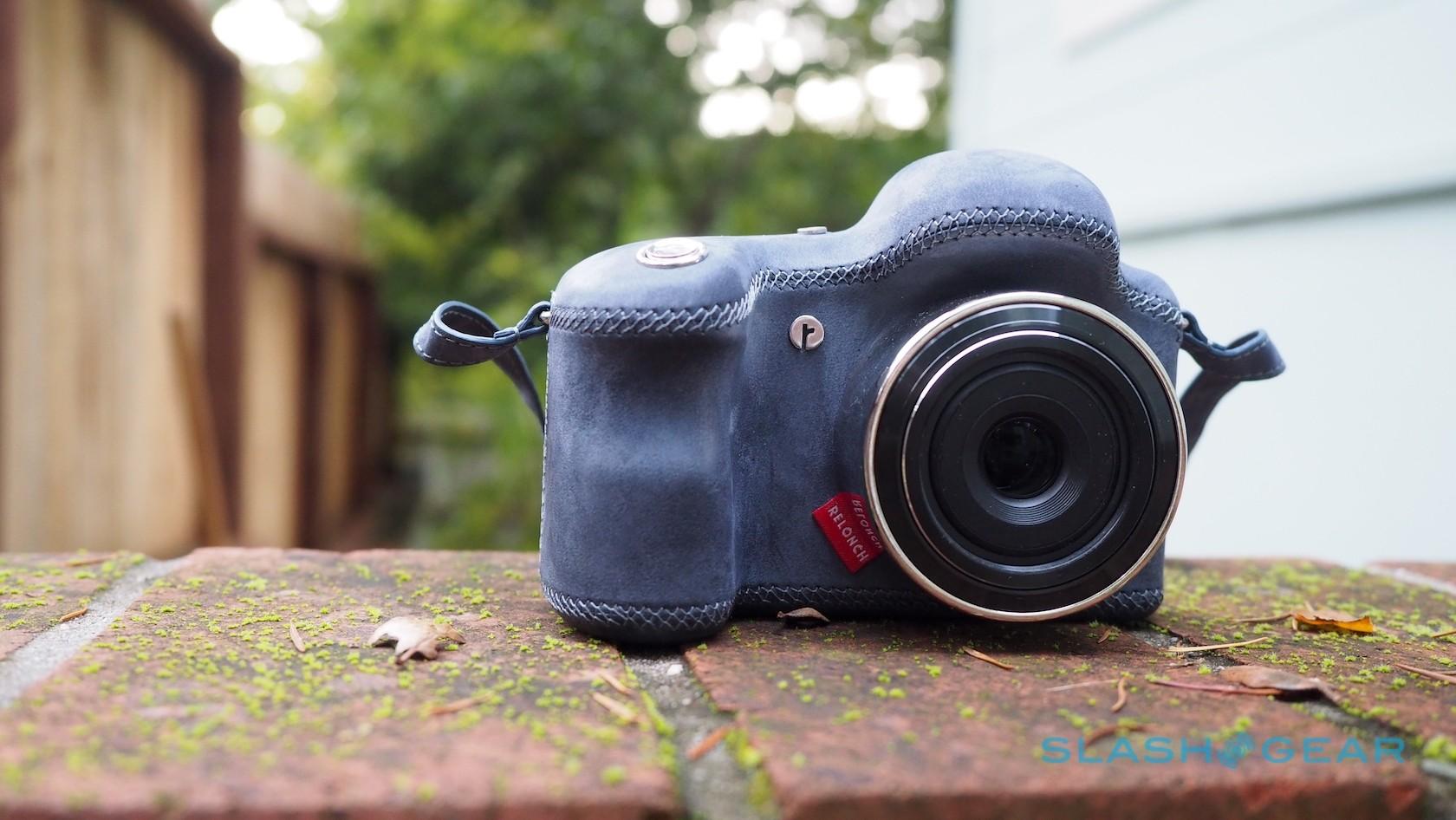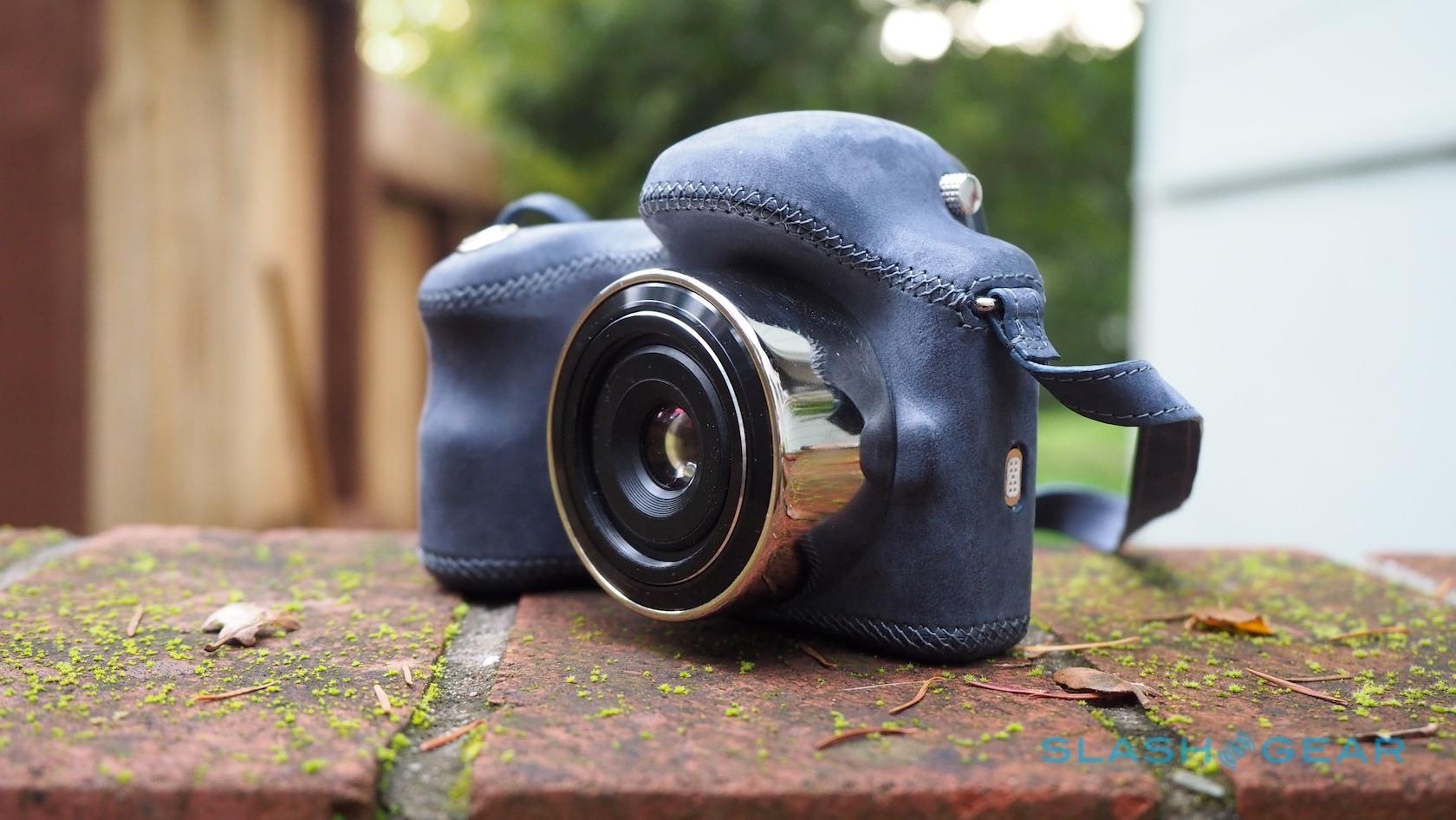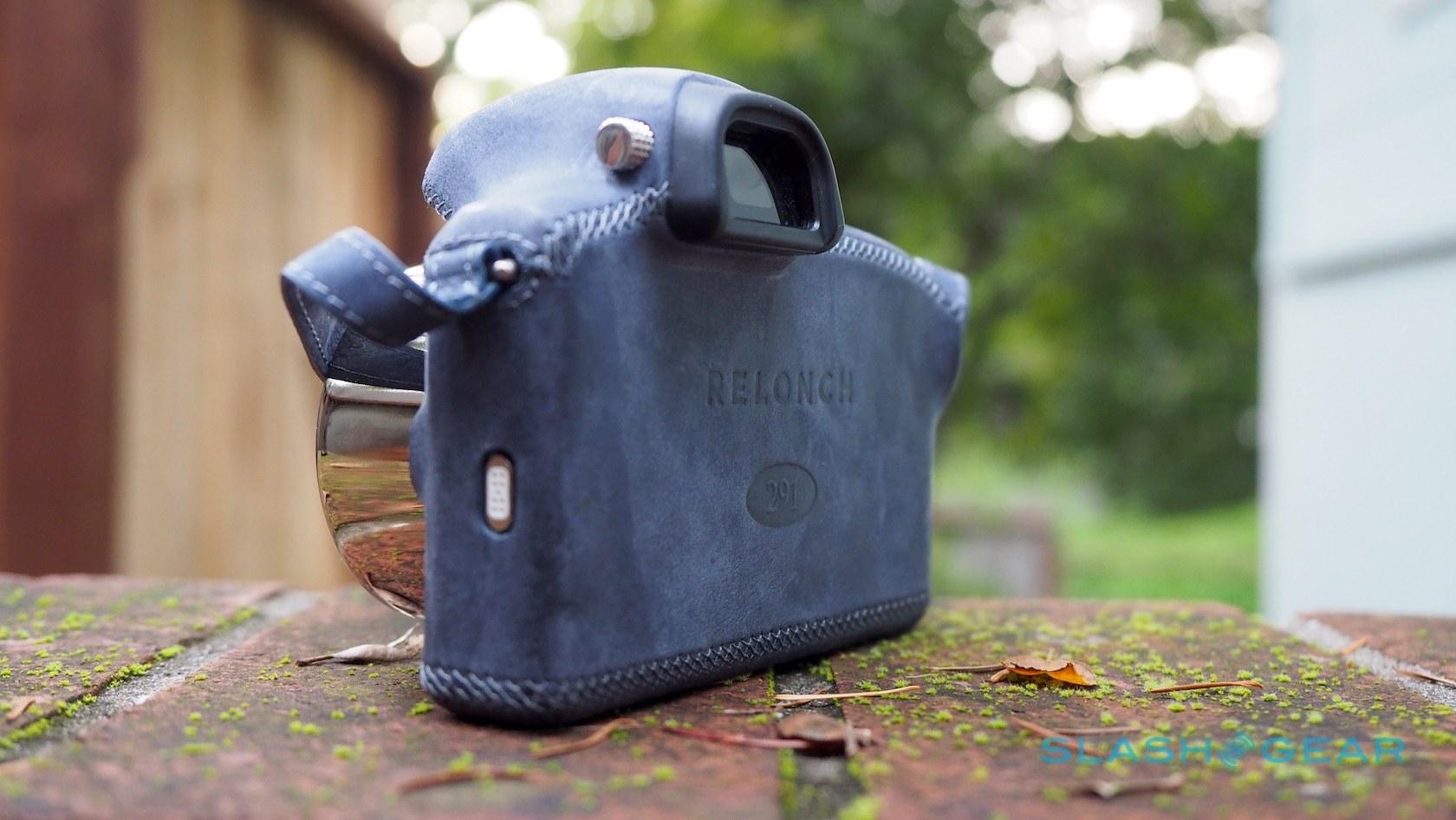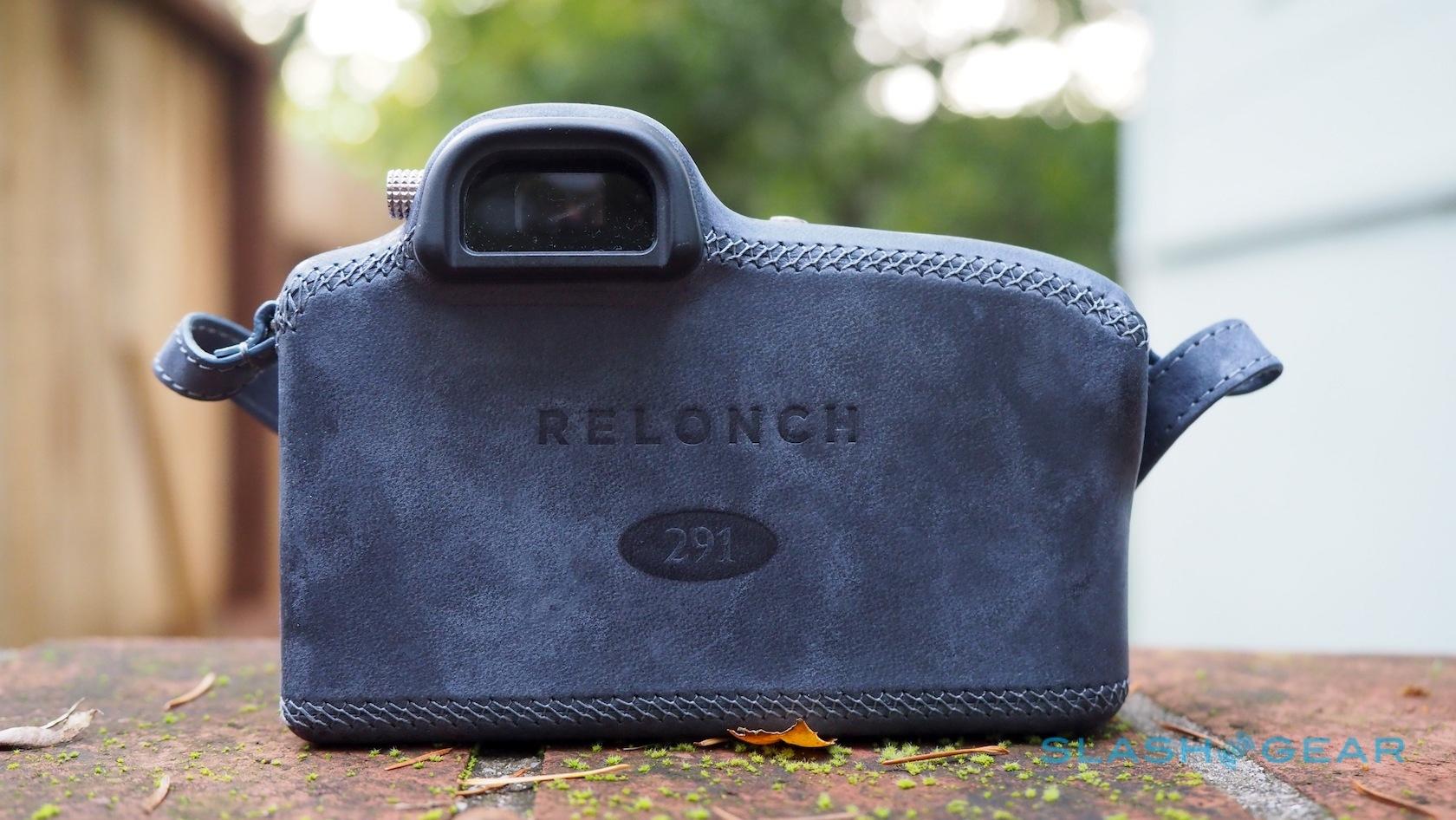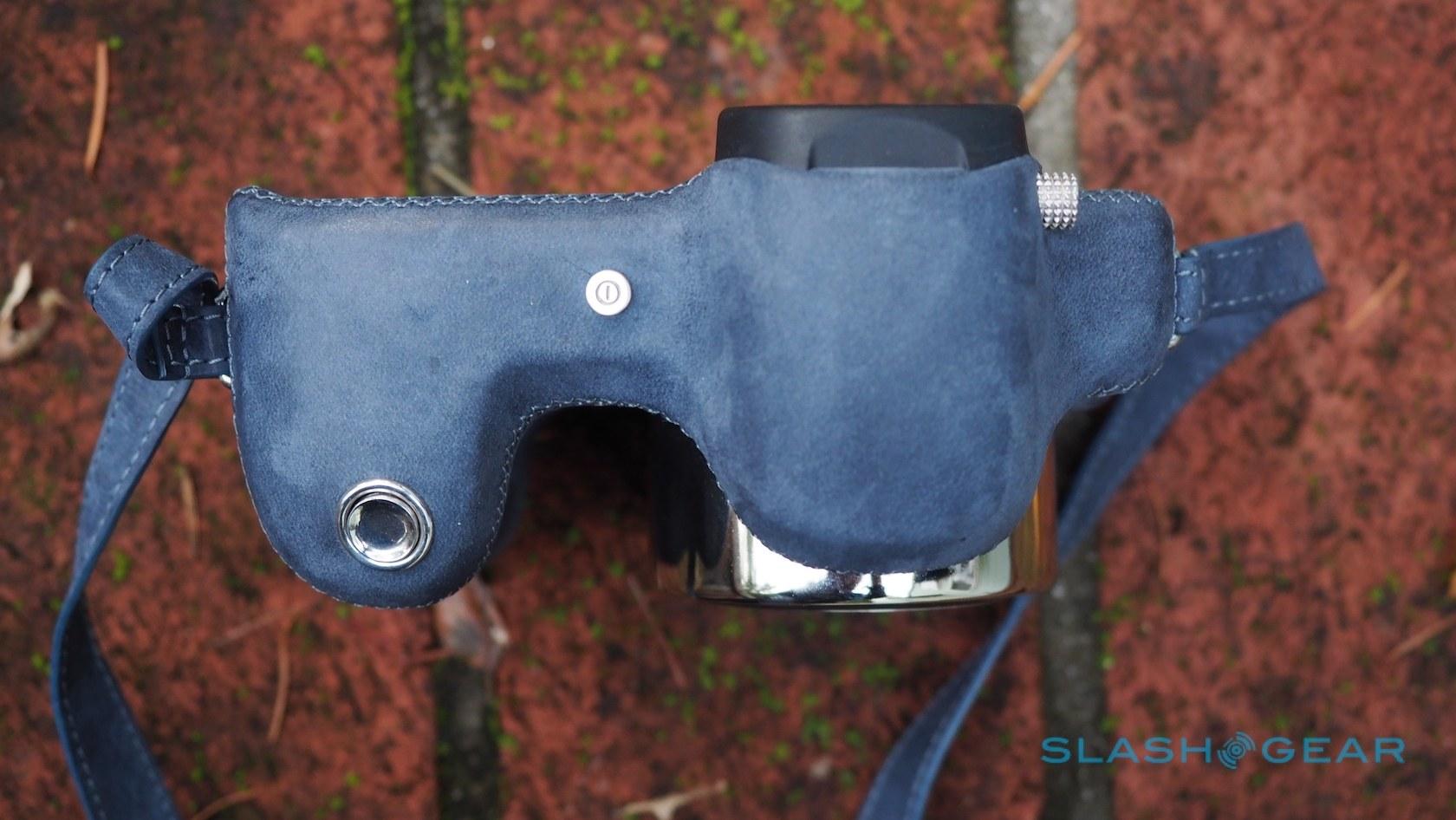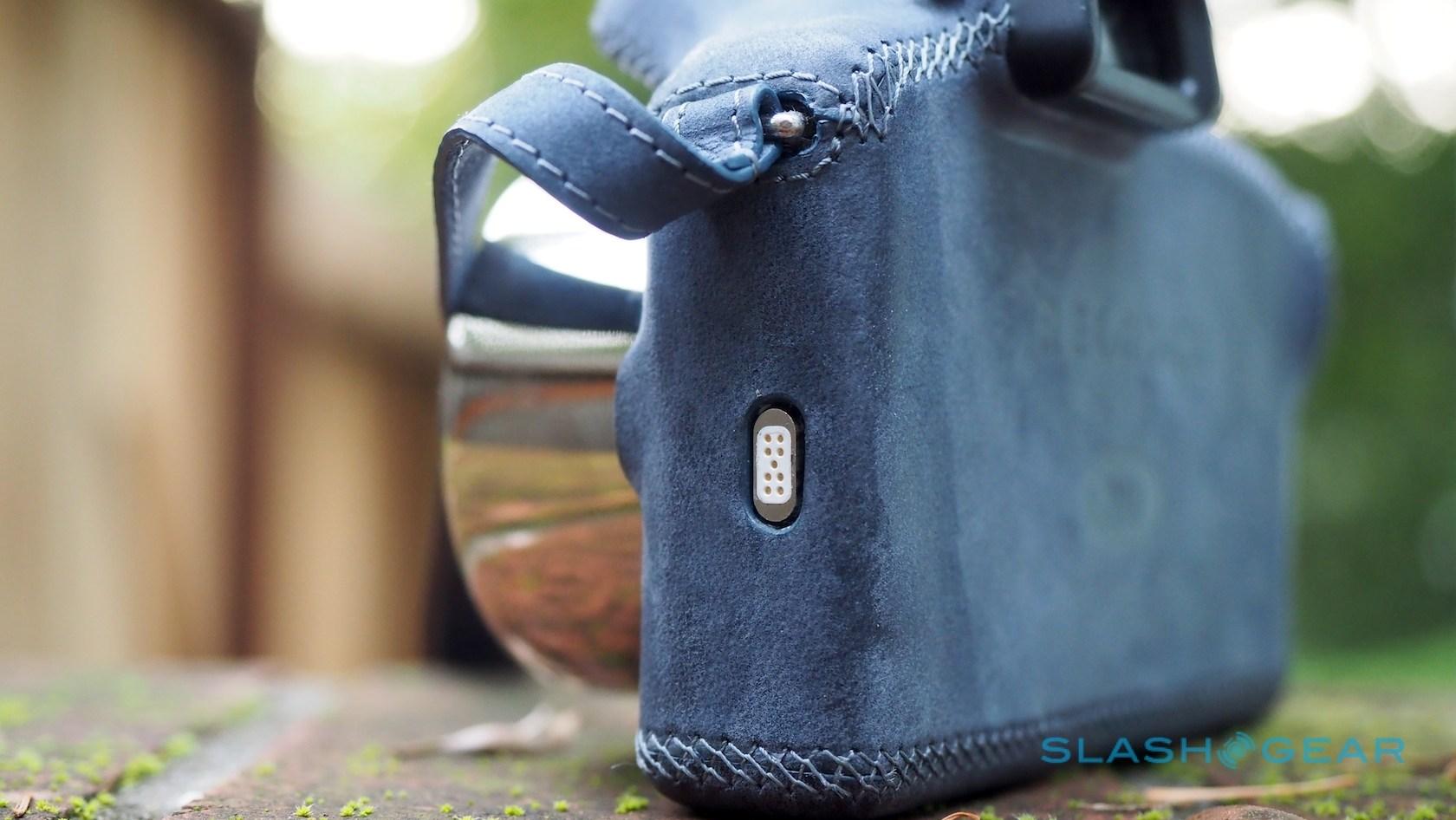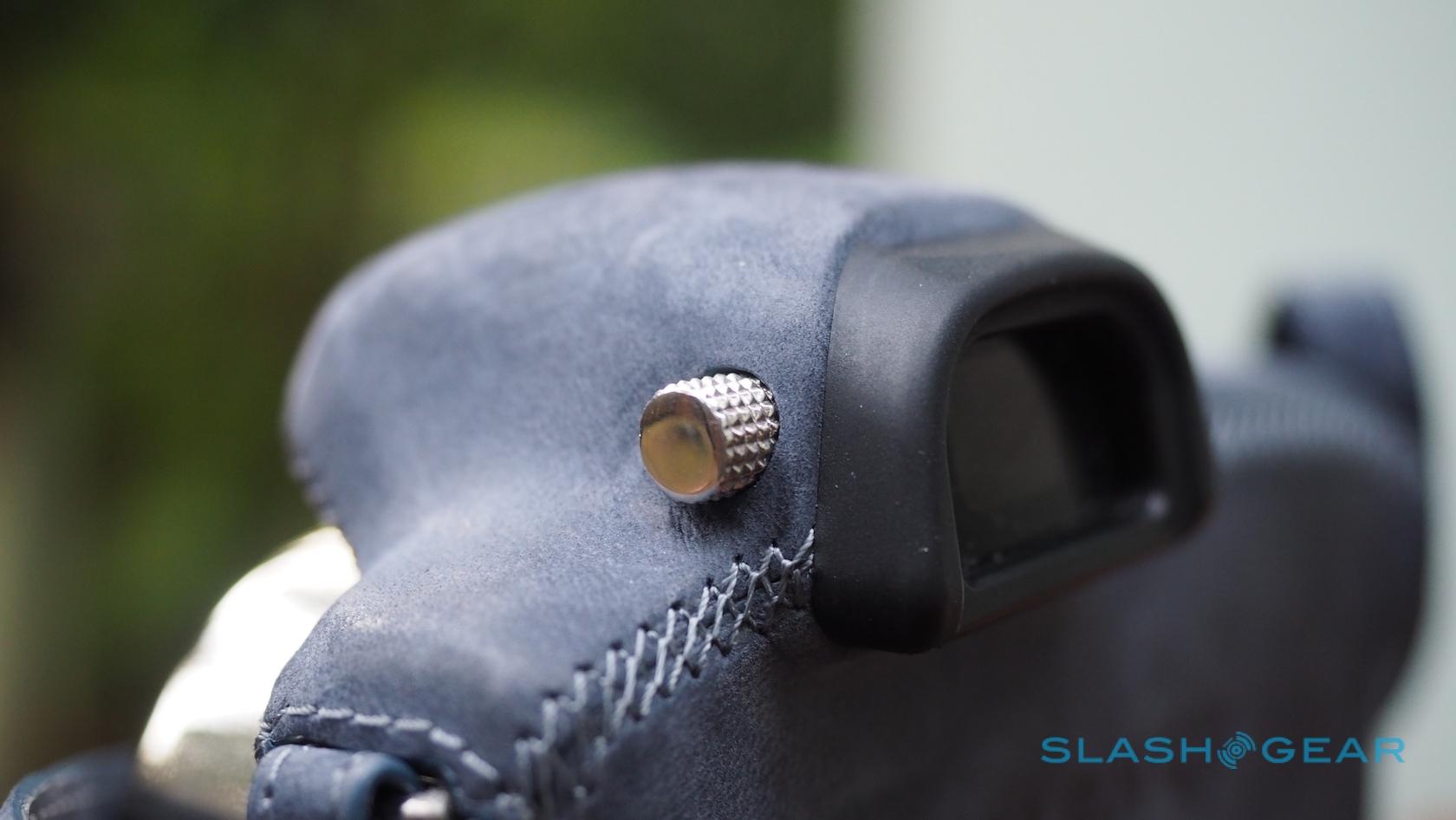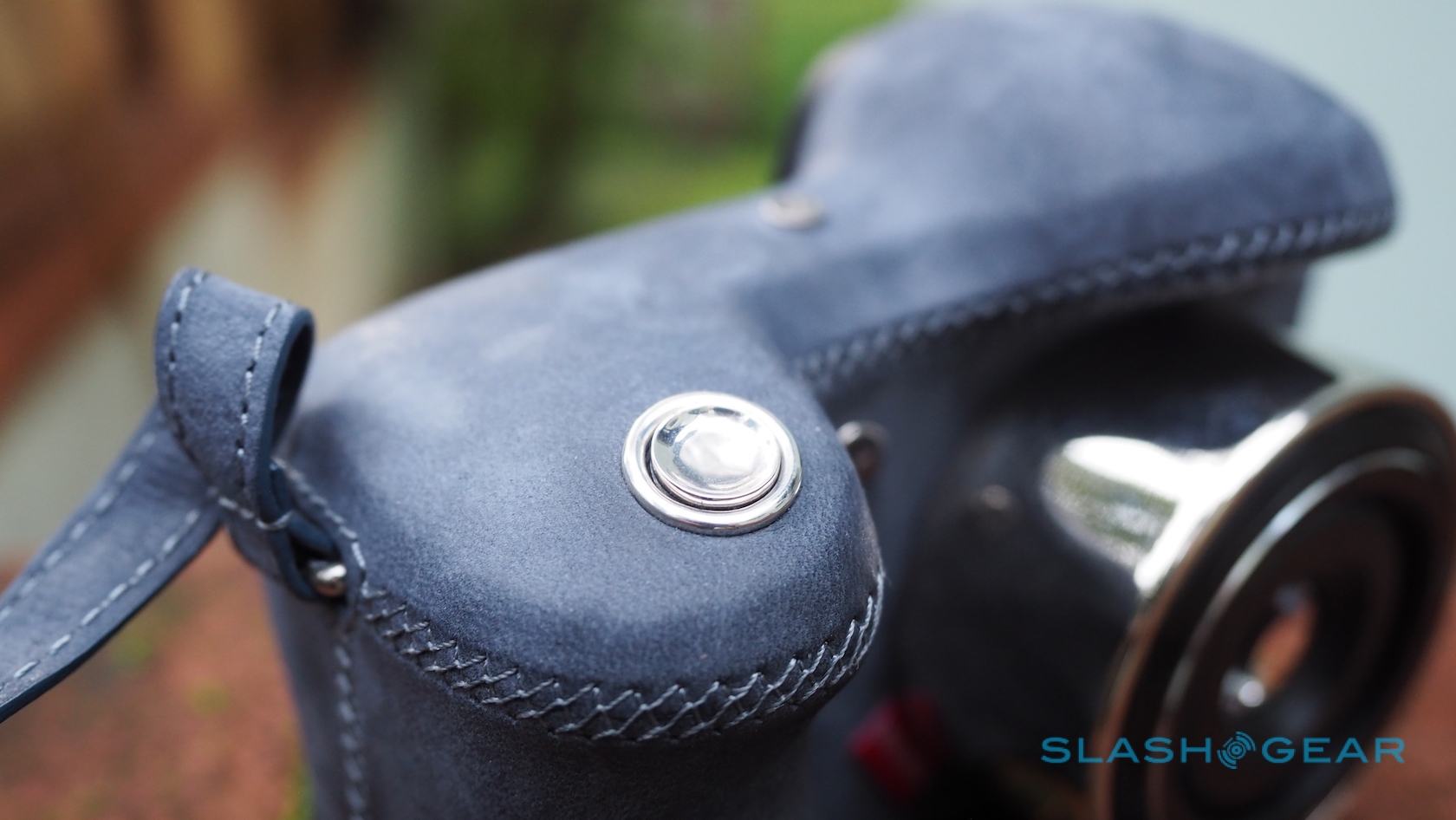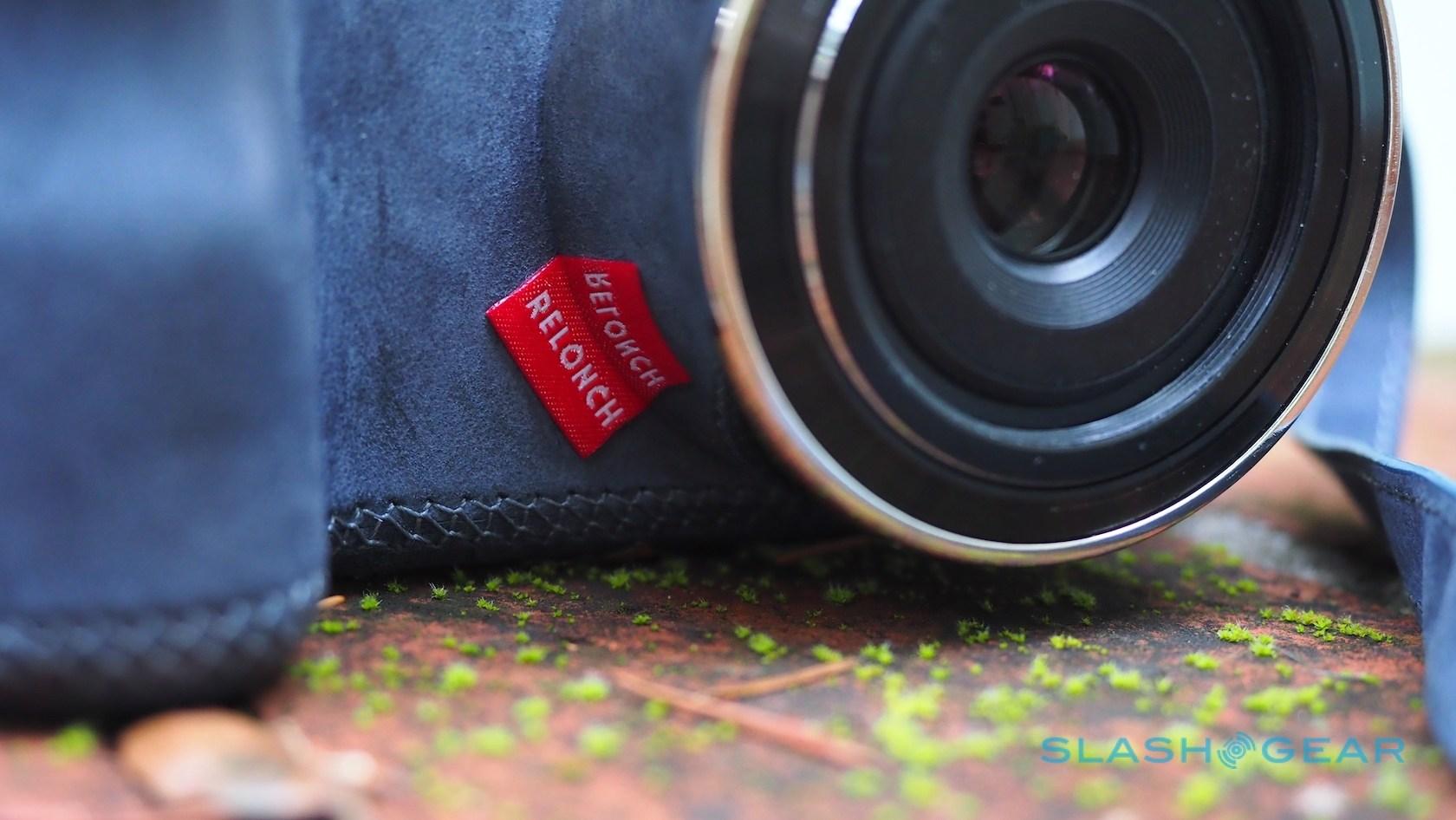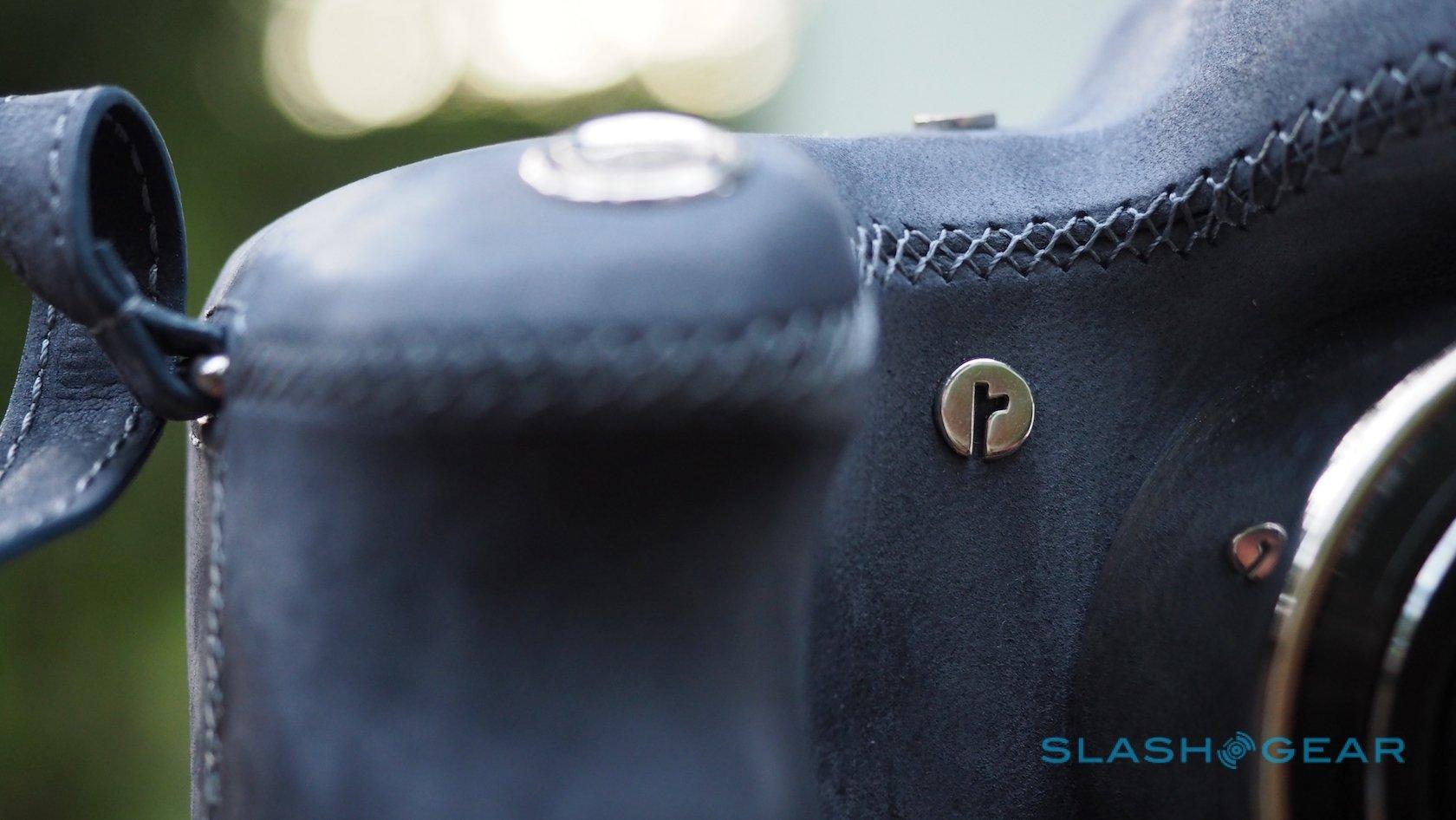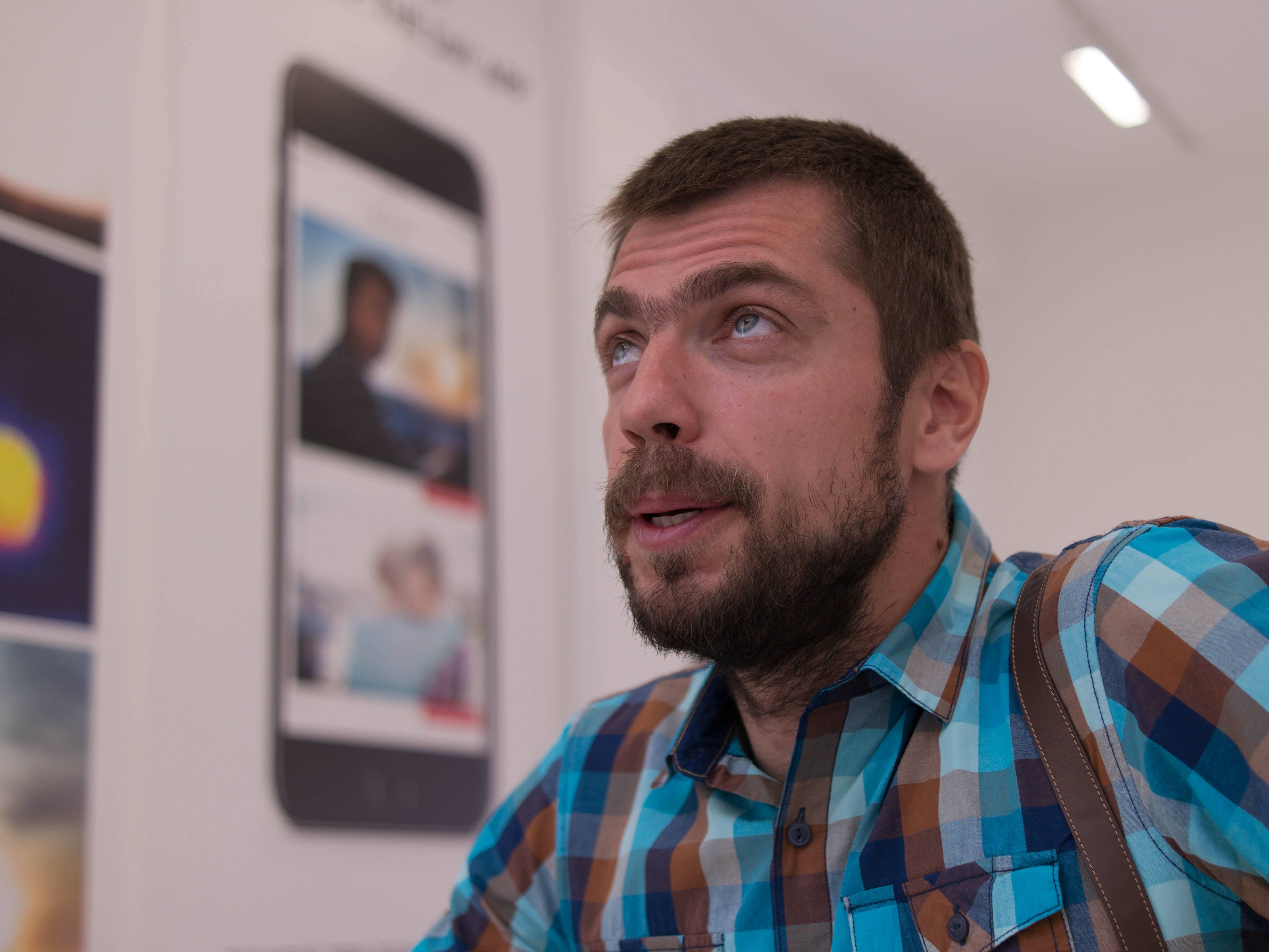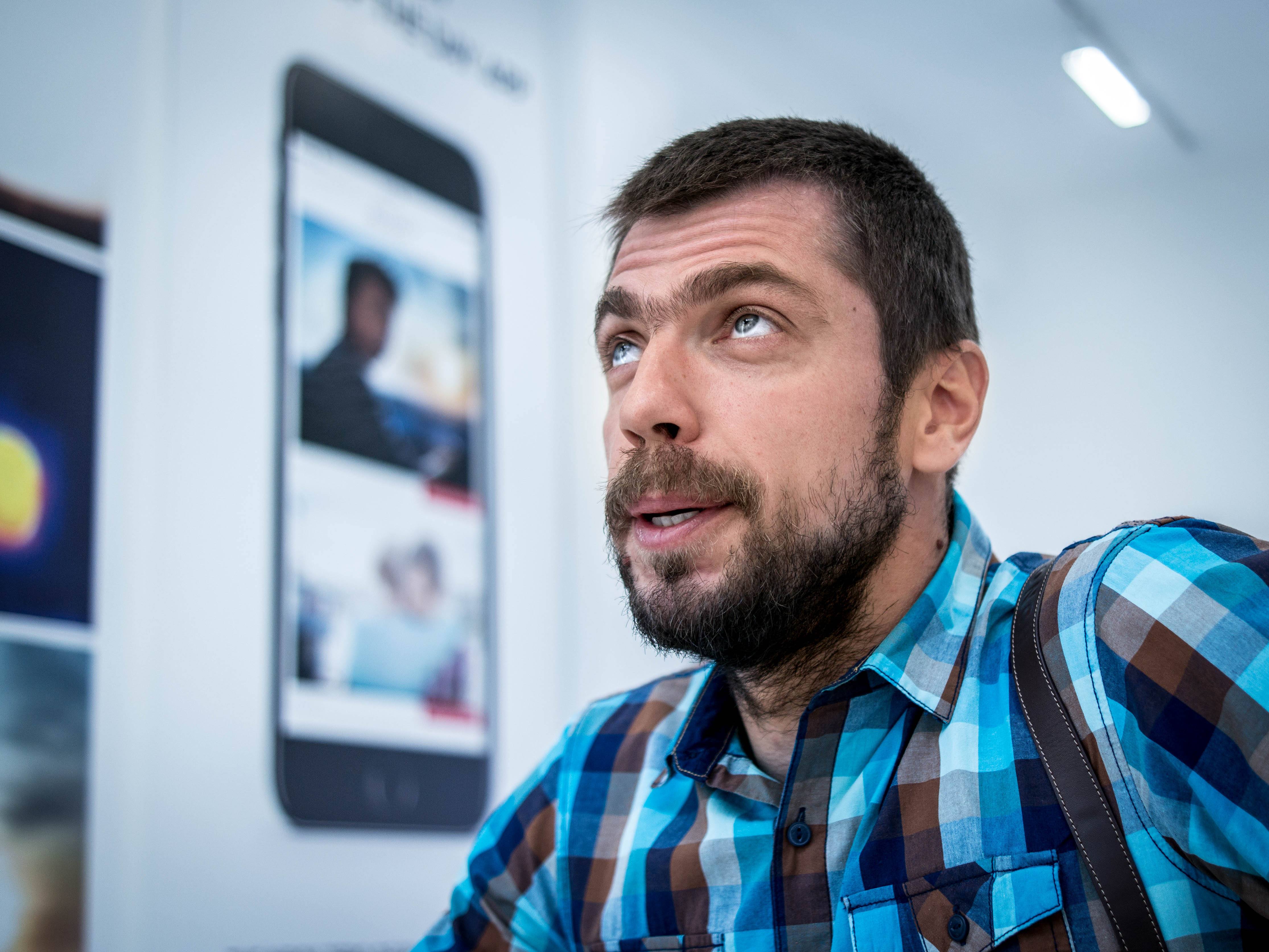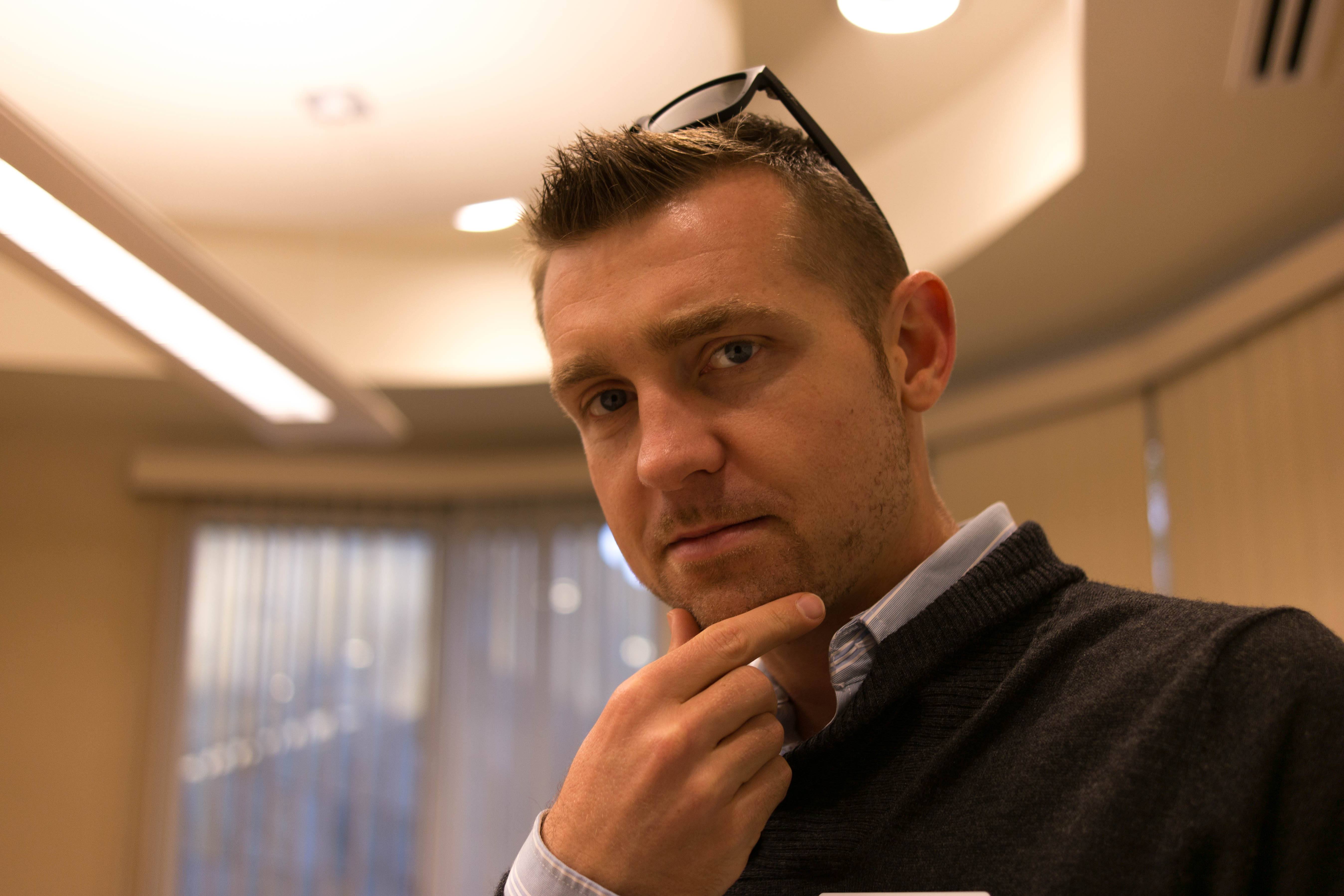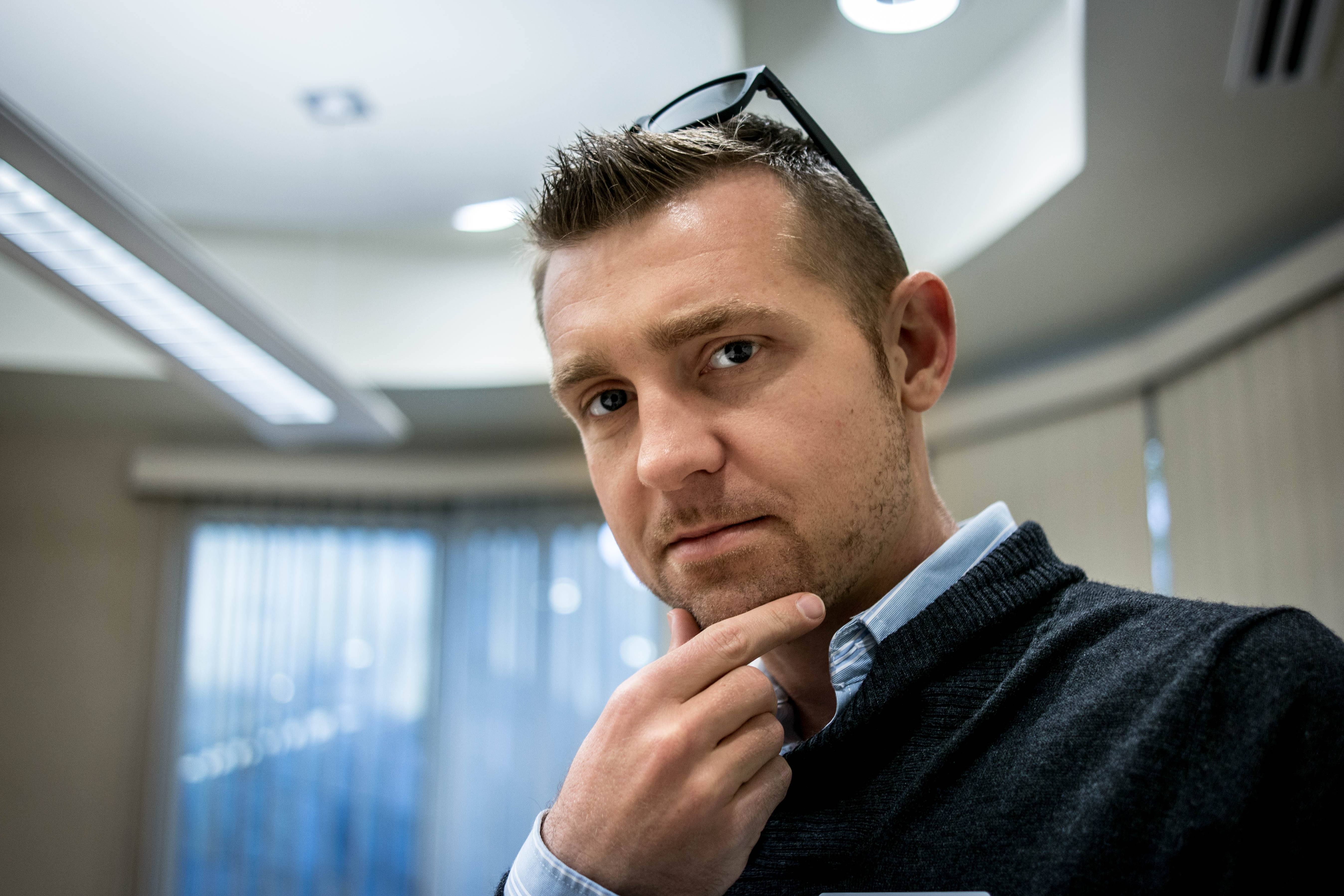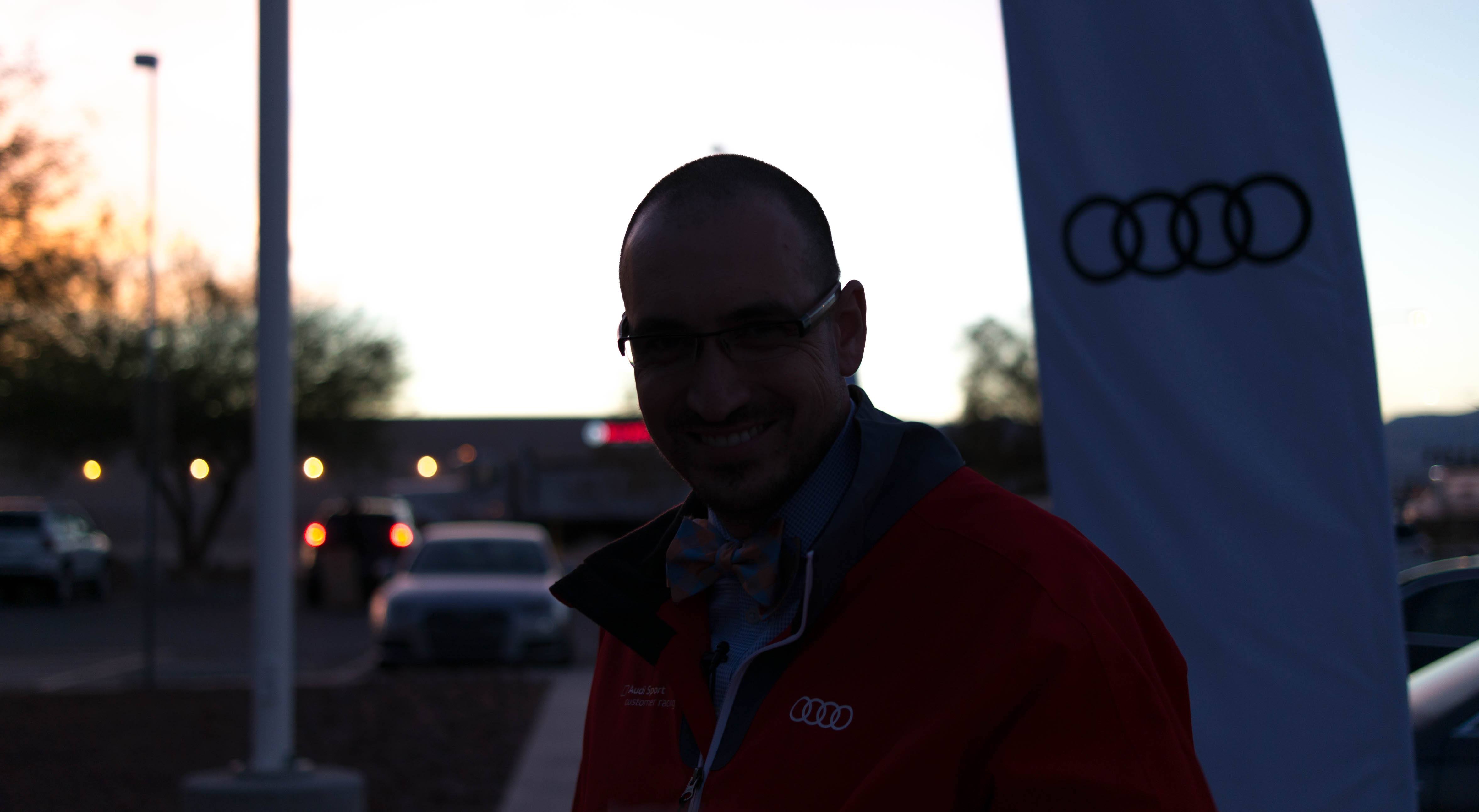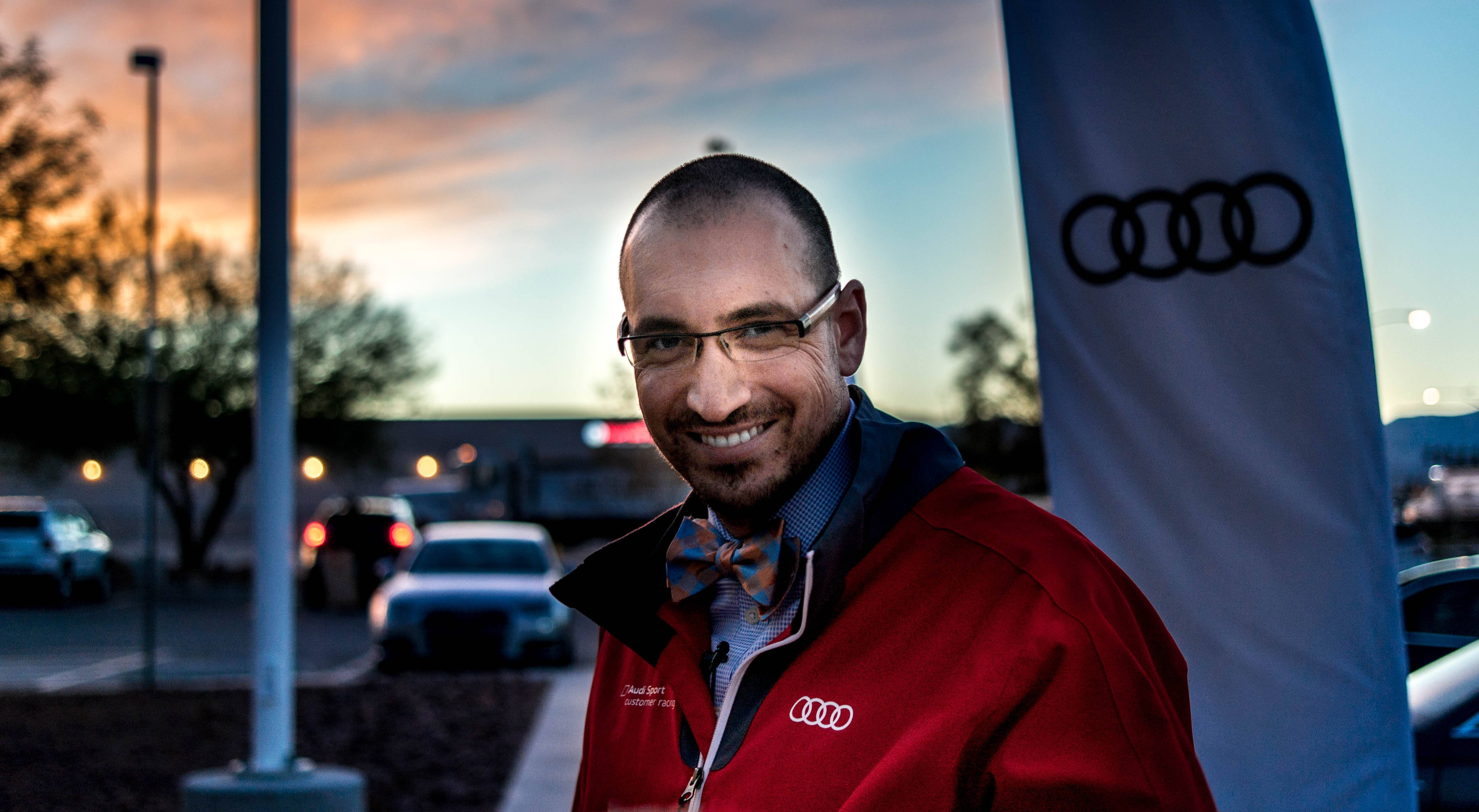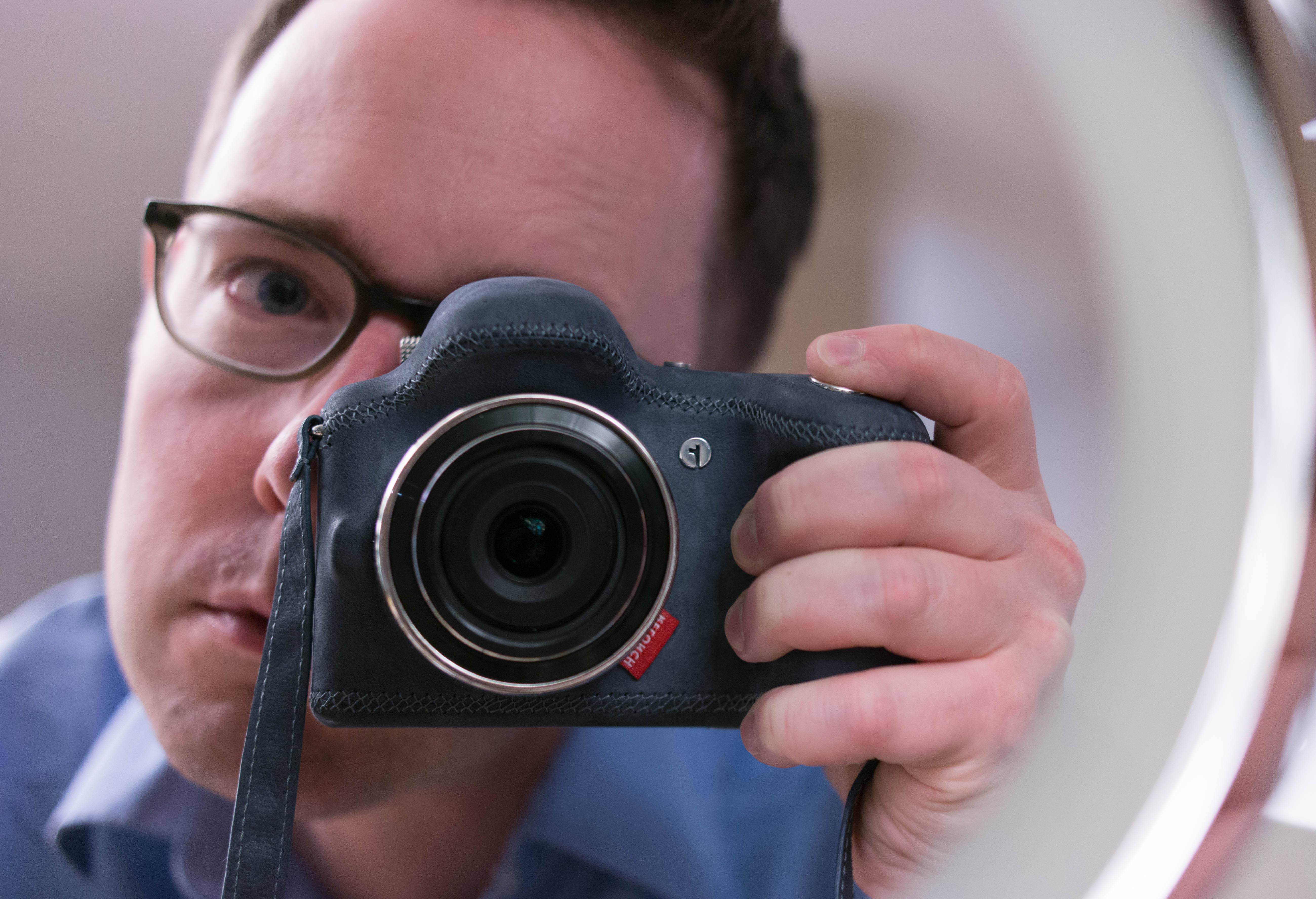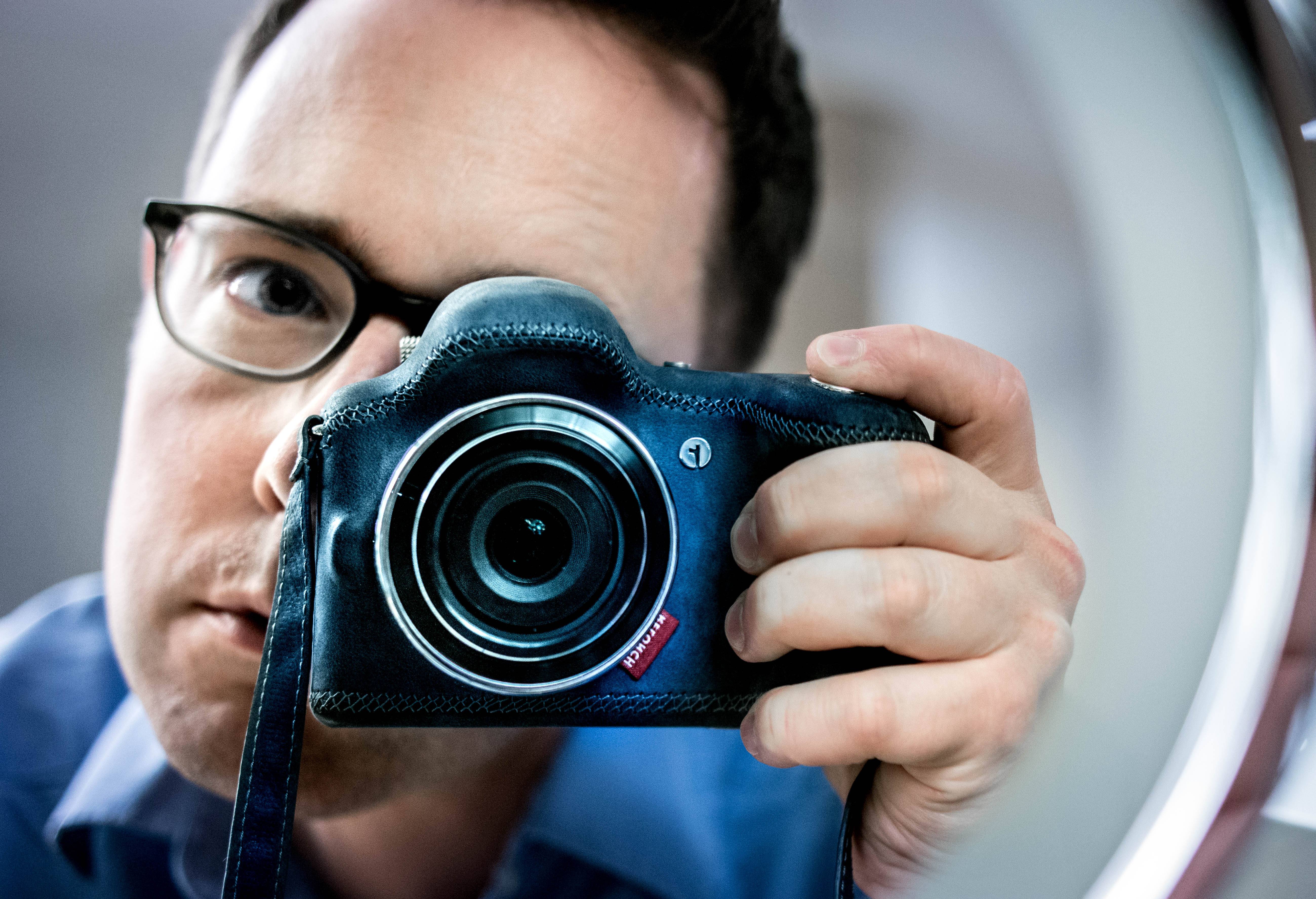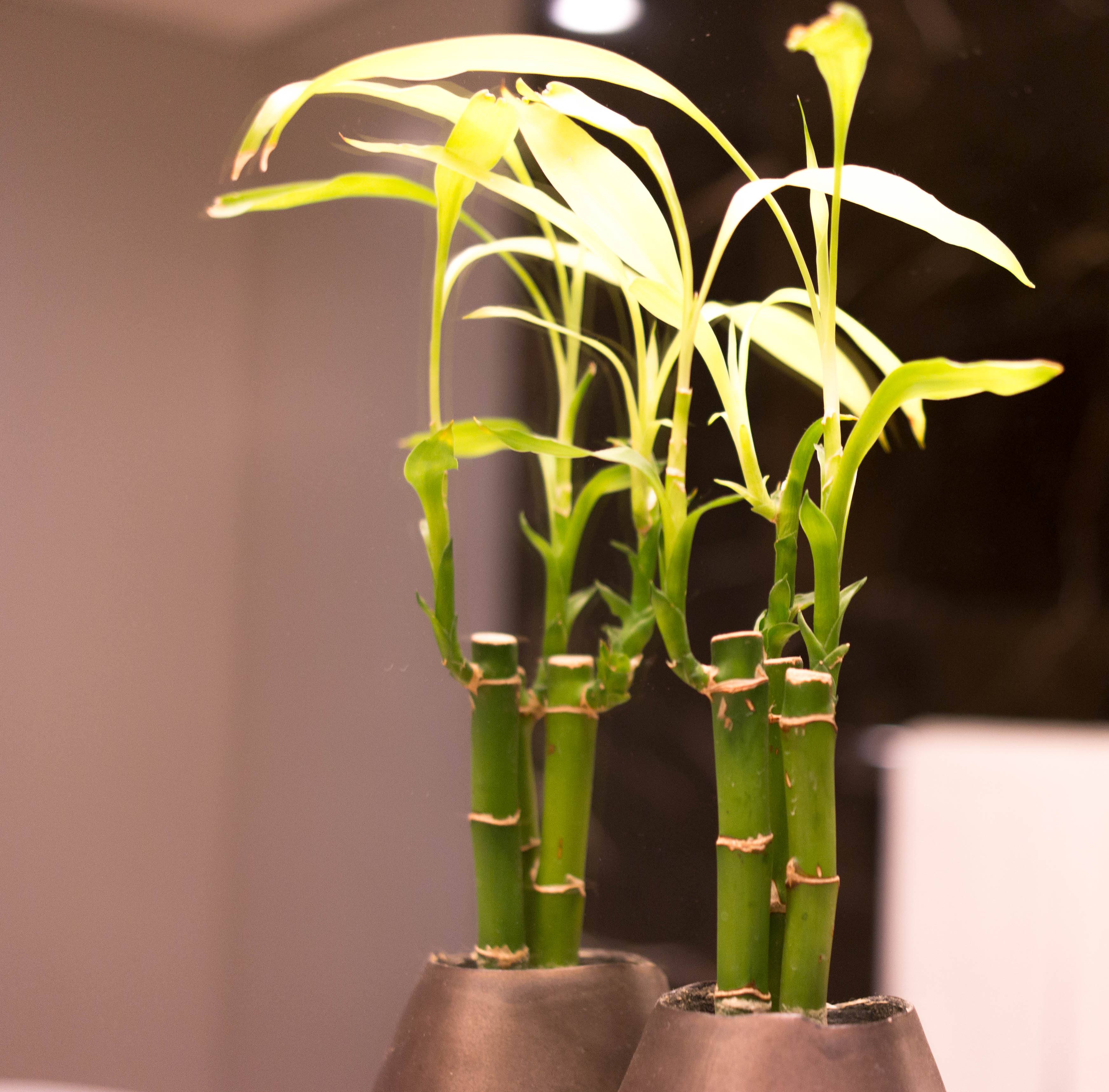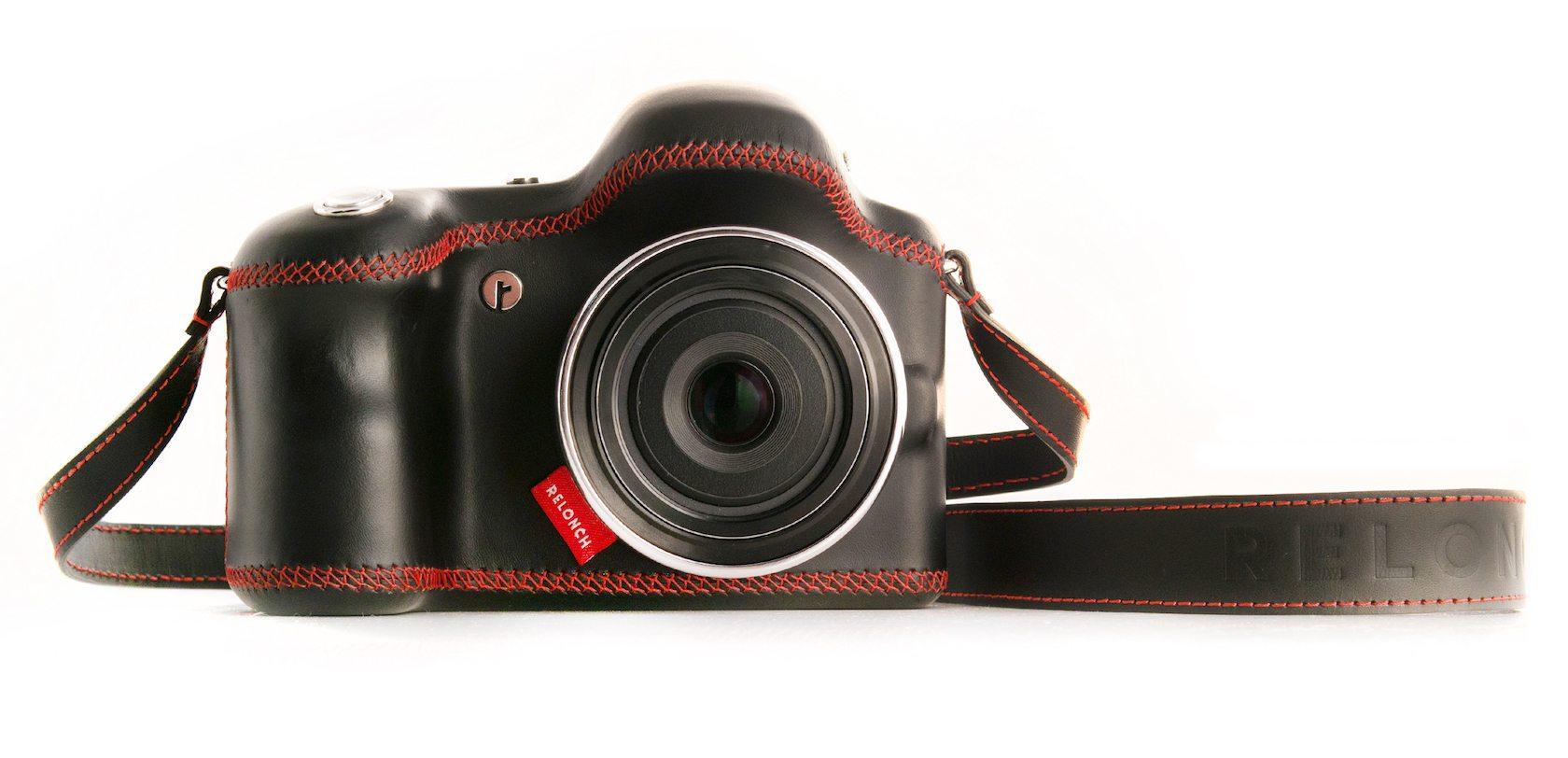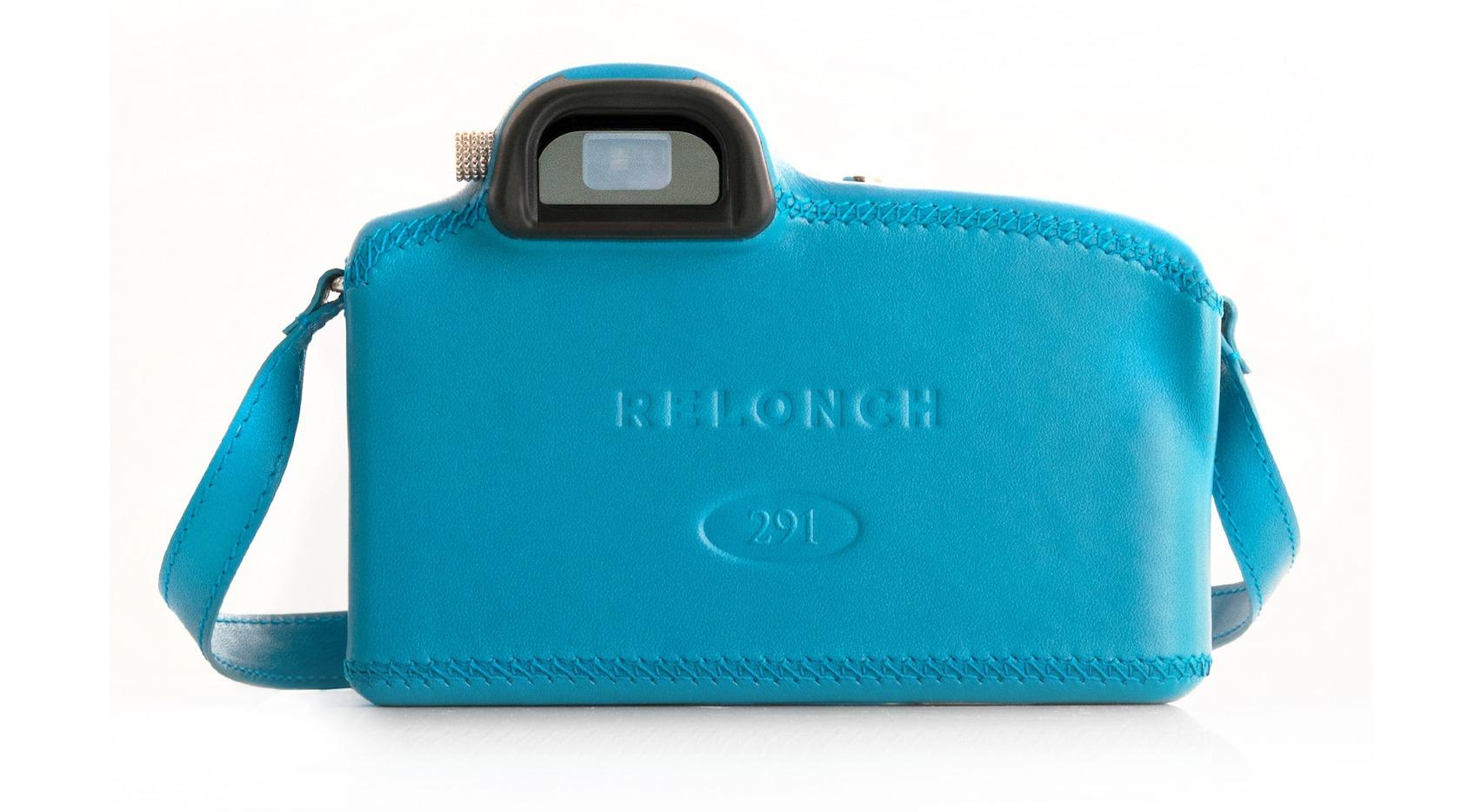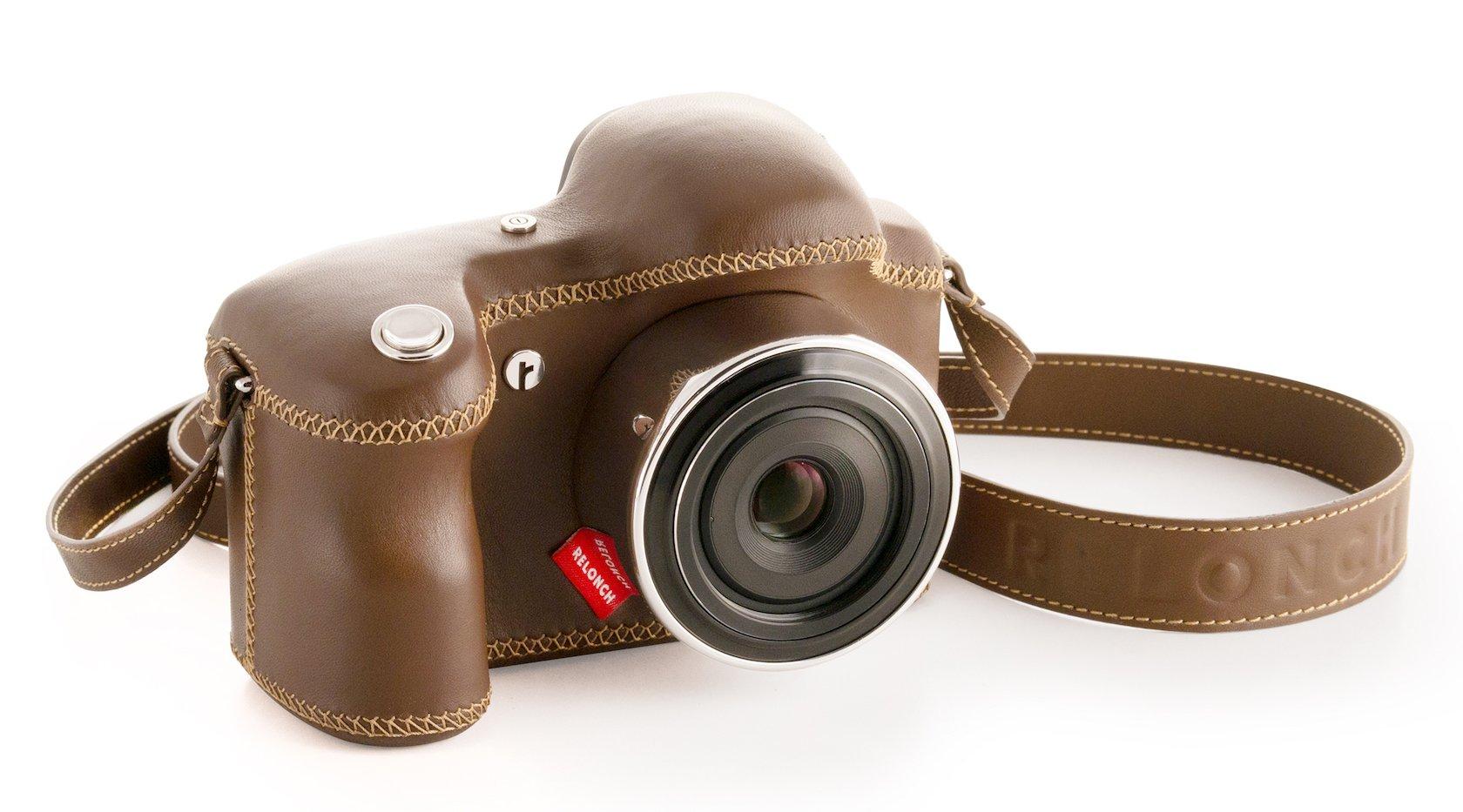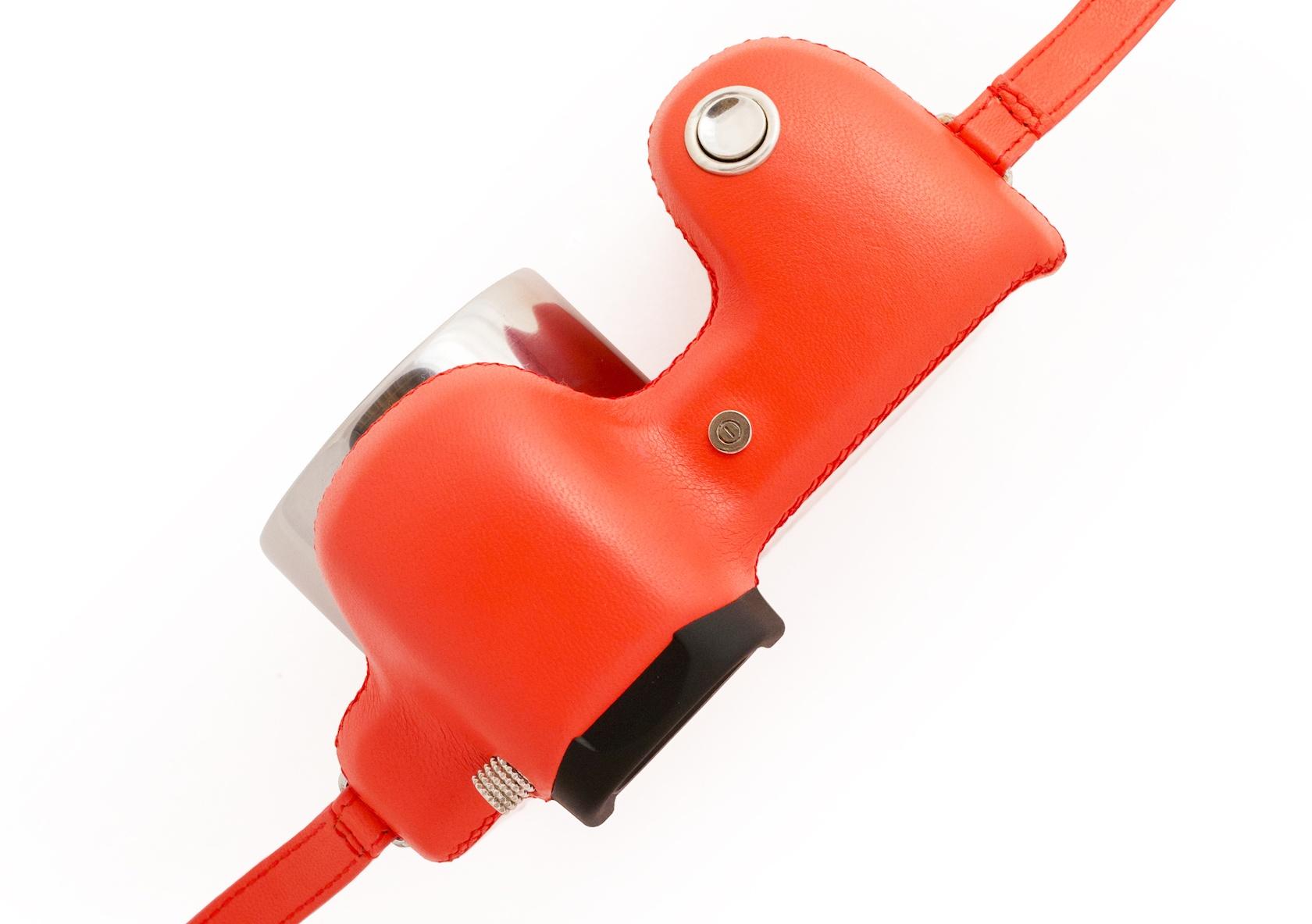Relonch Hands-On: Subscription Camera Meets AI Photoshop Whizz
For most people, their wedding day is the only time in life that they get the benefit of a professional photographer, but Relonch wants to change all that. Pairing their leather-wrapped, control-scarce 291 camera with the smarts of a virtual Photoshop pro in the cloud, the company's goal is to bring you out from behind the lens and back into the moment, only without sacrificing great pictures in the process. Question is, can that be worth a not-inconsiderable monthly subscription? I slung a blue suede camera around my neck for a week to find out.
The Relonch name might be familiar to you. A little over two years ago, the company caught some headlines with its idea of a camera attachment for the iPhone. Effectively a battery case with an APS-C sensor and large-aperture lens on the back, into which an iPhone slots, the concept was better photography than Apple's handset itself could offer, yet with the connectivity and app ecosystem iOS empowers.
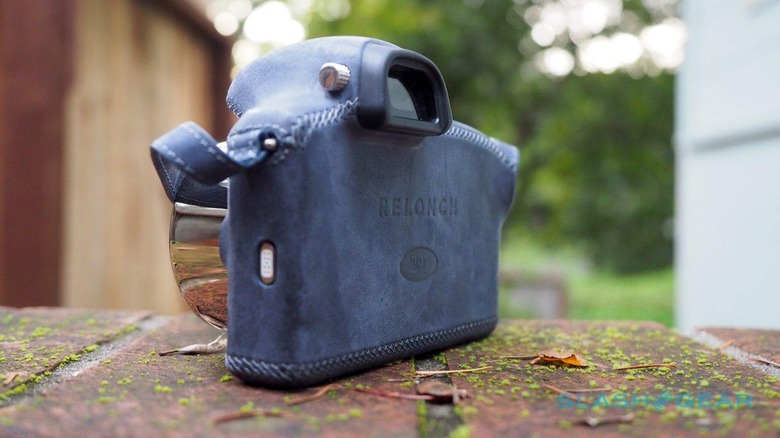
That Relonch Camera never materialized, but Relonch as a team couldn't shake the idea of democratizing high-quality photography. When I met with co-founder Yuriy Motin and and CEO Sergey Korzhenevich at their first showroom-cum-store, a Palo Alto, CA pop-up, they described a shared fascination with the concept of having a personal photographer. While a president or celebrity might be followed around by an official photographer, Motin explained, it was invariably the candid shots – with family, or when deep in thought, or doing something mundane – that were the most interesting.
Relonch 291 is the first step toward a world where everybody can have an official photographer of sorts. At least, it's the physical part of that equation, paired with a clever set of cloud processing algorithms to "develop" the best shots you take. The camera's name is an homage to the 291 art gallery in New York City, which at the start of the 20th century helped elevate photography to the same level of respect as sculpture and painting had long commanded.
You may take the photos – are encouraged to, no less, by a leather-wrapped camera the Relonch team designed so as to be more personable and thus more likely to be carried around – but it's the artificial intelligence which decides which are worthy. Relonch dubbed it Alfred, after Alfred Stieglitz, the famous photographer and creator of the 291 gallery. It's responsible for picking out the best images in your camera roll each day, and then applying the right post-processing to give them each star quality.
The result is something which attempts to bridge the worlds of smartphone point-and-shoot and the picture quality of a dedicated camera. On the one hand, underneath Relonch's fancy leather, there's a 20-megapixel APS sensor and an f/2.0 prime lens. However, there's no user-accessible memory card slot, no removable battery, no exposure or other adjustments permitted.
Indeed, there are only three controls on the whole camera. The shutter-release doubles as the power button. A smaller button alongside the viewfinder will, when held down for around 10 seconds, restart the 291 if it crashes or loses connection. Finally, there's an adjustment wheel on the EVF to compensate for differing eyesight.
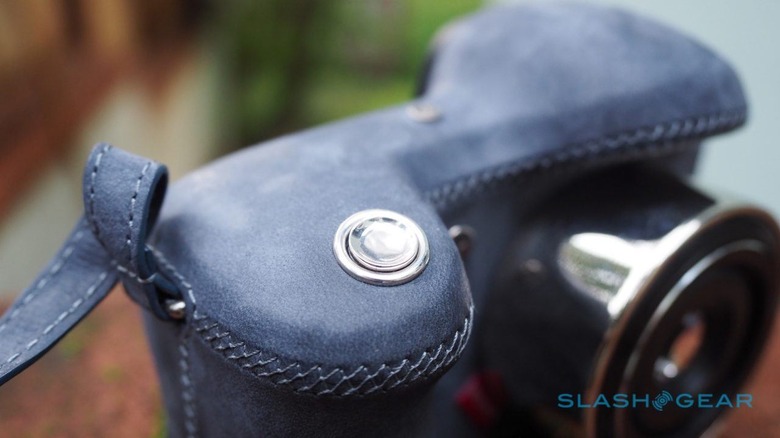
It means you can't manually adjust the focus, though you can center the focus on something, half-press the shutter-release to lock it, and reframe. If the camera doesn't get the exposure right, or the white balance, there's nothing you can do about it. You can't even see what photos the camera has taken, since there's no display on the back. Instead, a built-in LTE radio beams them all up to Relonch's cloud.
It's disconcerting to anybody who has spent a reasonable amount of time with a decent camera. "I just know there's an exposure wheel under here, waiting for my thumb," one colleague in tech told me. Your hands feel a traditional camera, but the controls you've come to expect are simply... gone.
There's something fairly 35mm-esque about Relonch's system. With traditional film, we didn't have the luxury of instant review. It was only when the processed negatives and prints came back that we knew whether what we'd actually captured was anything like what we had intended to capture.
In Relonch's case, that moment comes the morning after, though it's in an app rather than tucked inside a cardboard envelope. Again, constraint is the order of the day: you get at most around ten shots, all processed by the company's algorithms, and the idea being that you select the "best" image of yesterday.
That serves two purposes. As you make your choice, Relonch refines its processing algorithms according to individual taste. More personally, though, you're building a timeline of favorite photos that, in retrospect, turn the year into an album.
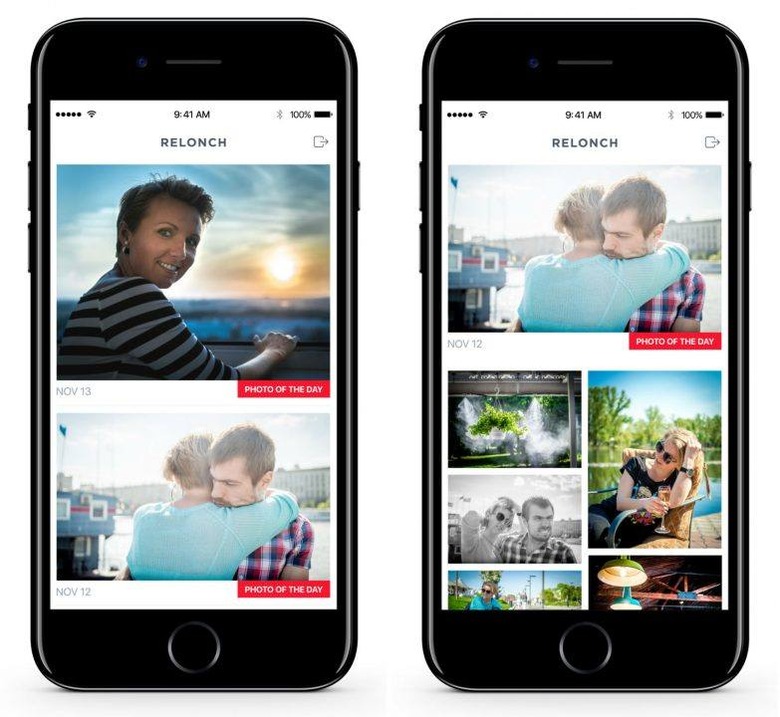
Relonch's team is still working on the app, however, so my test photos arrived each day in a shared iCloud gallery. As a paid-up member of the digital era, the fact that I couldn't immediately flick through my shots – or even offload them off the 291 camera myself – was frustrating.
All the same, it did introduce a sense of anticipation each morning. When the photos landed in the shared gallery, it was something of an occasion: which photos would Alfred pick, and what would it do to them? Relonch describes it as "the importance of limitations," and there's certainly something to the idea of having a third-party curator filtering out only the best for you.
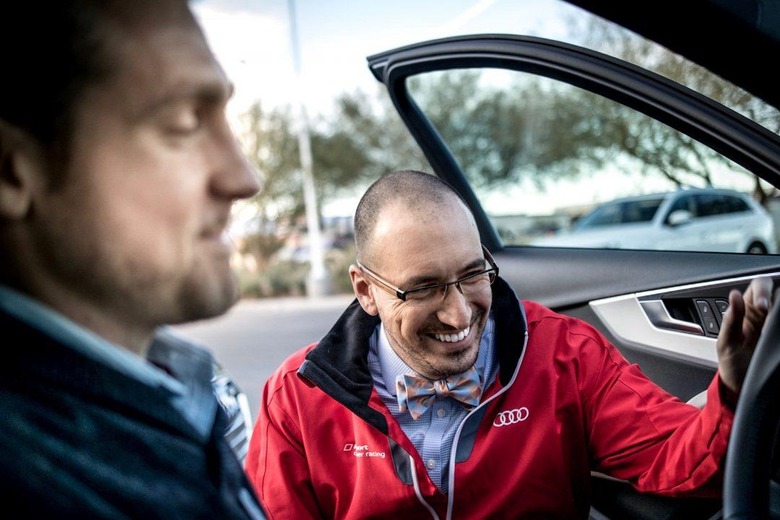
And the editing? That takes a little explaining, too. The idea is that Alfred the AI is being taught best-practice for photography. Thousands of sample images are sorted into different categories, or "stacks", based on lighting conditions, locations, and objects within the frame. Each combination of object and lighting gets a set of professionally prepared adjustments; by identifying what's in your own pictures, the idea is that Alfred can apply the rules of the stack to get the best results.
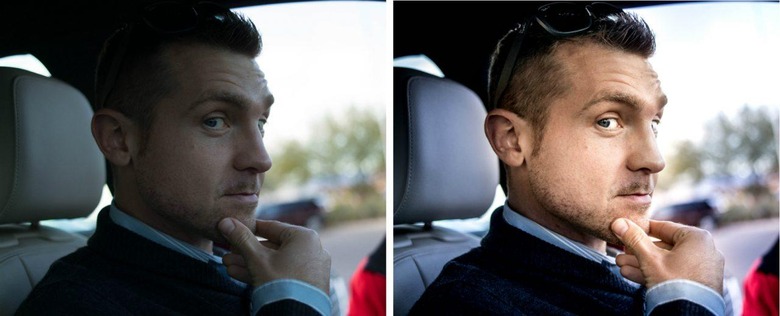
What makes Alfred special is that a frame can be organized into multiple stacks. With a photo of a person in front of the ocean, for instance, the idea is that the AI would identify not only that it was a portrait but the nature of the landscape too, pulling in algorithms suited to each of those stacks. Moreover, the fact that there are eyes and teeth in the frame could be identified and each whitened; underexposed areas can be made lighter without the image as a whole being brightened.
It's more than just filters as you'd find in Instagram or automatically applied in Google Photos, Motin and Korzhenevich insist, and from my own sample shots over the past few days I would agree with that. Sometimes the processing is subtle: a cleaning up of skin tones, an overall tint added for some greater visual punch, and more balanced contrast, perhaps. In other shots, the changes are far more noticeable: taking, for instance, an image almost too dark to make any detail out, and pulling from it a wealth of nuance.
Relonch Before/After Samples:
Alfred is always learning, Relonch tells me, and right now the photo editors are still tweaking and refining the algorithms that apply to each stack. If a set of stack adjustments don't work for all the pictures in that collection – for instance, if photos of the same objects are taken in new lighting conditions – then a new stack is created with its own algorithms.
In the same way, the Relonch team is still figuring out exactly what the service should and shouldn't offer. I confess, while I was surprised at how well some of my photos were adjusted, I longed for a little manual control of my own. Basics, such as being able to toggle between color and monochrome, are likely to be added to the app eventually, Korzhenevich tells me.
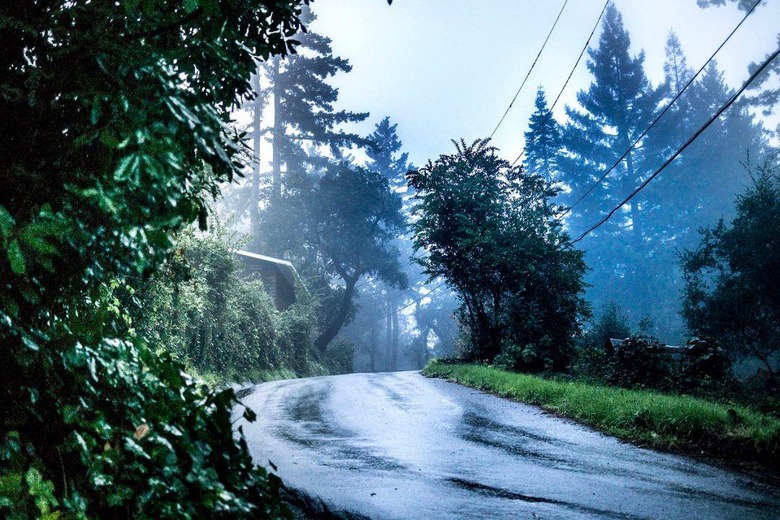
More concerning, though, is the lack of access to all of the photos you've captured. As it stands, there's no way to access either the RAW shots or the entirety of your camera roll (Relonch extracted some before/after files for me, but the system isn't designed for users to access them). The control-freak in me doesn't like that one bit.
Relonch is thinking about how it should handle that moving forward, but it's another thing on the roadmap. Similarly, don't get too hung up on the 291 hardware. Beyond this wrapped off-the-shelf camera, the company has ambitions for a custom design: I can't show you the renders I saw, but imagine something which looks a lot more like the original Relonch Camera, squared-off with simple lines.
Korzhenevich and Motin are hoping to collaborate with camera companies, carriers, and fashion brands with the second-generation model, emphasizing rather than hiding the elements that come together to make a stylish, intelligent camera. The final result will have transparent body panels so that you can see the origin of the camera components and the cellular network it's using. Meanwhile, interchangeable shells could run the gamut from whimsical to designer.
Right now, neither exec could tell me who Relonch is in negotiations with. Indeed, a full commercial launch is still some way off, in 2018. Initially it'll be pockets of users in targeted locations that the company offers its $99-per-month, camera-as-a-service platform to. Beyond the Palo Alto showroom and gallery, there are more planned in 2017.
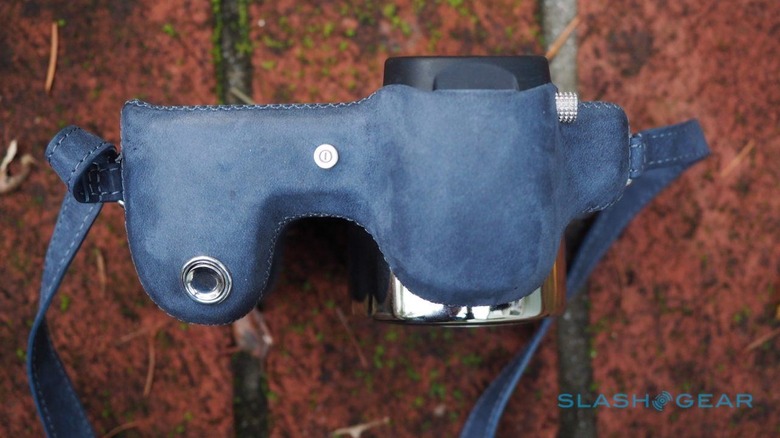
Right now, I'm at the "fascinated skeptic" stage. Certainly, I can see the value in more considered, intelligent post-processing, and this sort of computational photography is just what we've been promised from artificial intelligences. Could a half-decent Photoshop user do something similar? Maybe so, but there's something to be said for outsourcing both that and the filtering process that comes before it.
All the same, paying almost $1,200 a year for the use of a camera you don't actually own and can't access the unedited photos from seems outlandish. I like the idea of being able to just hand over old hardware whenever Relonch comes out with a new version, but even with LTE, Alfred processing, and hosting costs thrown in, this is nowhere near a cheap solution.
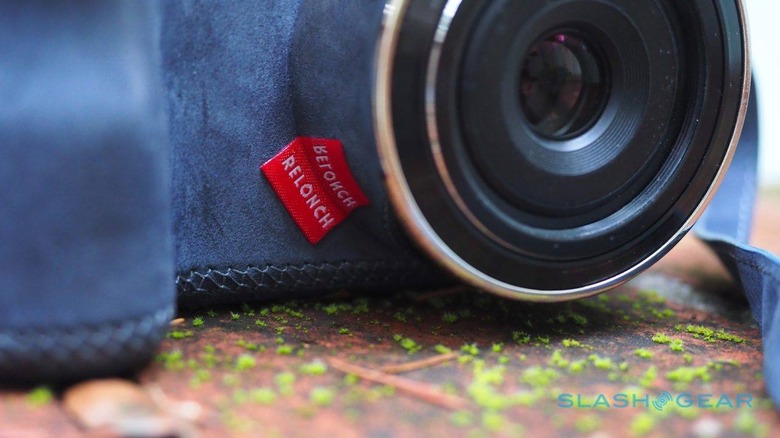
Relonch's popularity will hinge on the value it adds. That's down to processing quality and convenience, of course, but also the degree to which individual users value the time saved in the process. I could see a cheaper service, where users bring their own camera and merely send the RAW files off into the cloud for clever manipulation, being more readily accepted, but Korzhenevich and Motin tell me the algorithms need to know exactly how the camera is shooting as a baseline from which to work from.
There's a pegboard running across one wall in the Relonch showroom. From it, the team hopes to eventually hang a row of traditional DSLRs, traded in – even if just temporarily – by curious would-be photographers giving the 291 camera a try. How many of those cameras will be reclaimed and used once more remains to be seen, but there's no denying that Relonch is a fascinating detour into the possibilities of AI.
MORE Relonch

